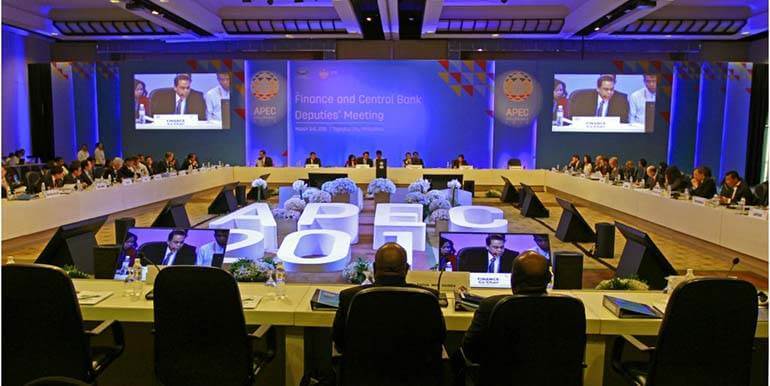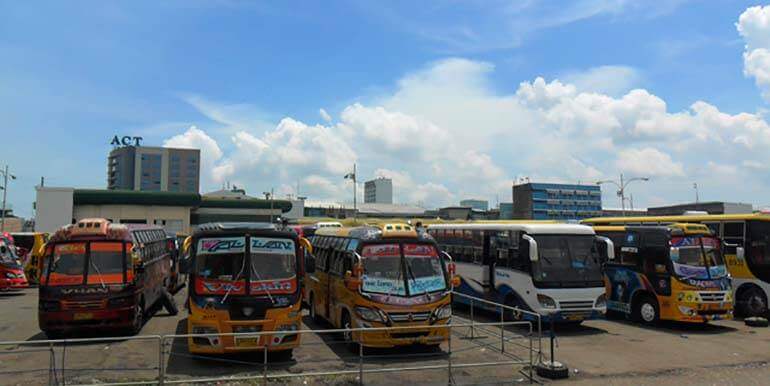
Financial Integration, Transparency, Resiliency, and Infrastructure Development & Financing discussed in Tagaytay
TAGAYTAY CITY, PHILIPPINES—Deputies from finance ministries and central banks of APEC member economies gather here to firm up the Cebu Action Plan, a roadmap proposed by the Philippines to make the Asia-Pacific region more inclusive and resilient in the years to come.
Inclusivity has been placed on the APEC agenda amid the desire to make economic growth redound to a faster pace of poverty reduction. Robust growth of economies becomes meaningful only if the benefits are shared by the majority, delegates agreed. Resiliency has also been a focus of policymakers in the region given various risks to growth, such as natural disasters, and lackluster global demand and financial-market volatility arising from slower recovery of advanced economies.
“With the Cebu Action Plan being a key agenda in the APEC Finance Ministers’ Process this year, we can forge inclusive economies with financial integration, transparency, and resiliency, as well as infrastructure development and financing,” Philippines’ Treasurer Roberto Tan said Thursday during his opening remarks for the APEC Finance and Central Bank Deputies’ Meeting, which runs from 5-6 March 2015.
“Financial interconnectivity of APEC member economies and their close linkages in the global financial markets, makes the region exposed to the risk of a global market liquidity dry-up and other market volatilities. As such, APEC economies must also build buffers to protect it from these financial market disturbances,” Treasurer Tan added.
Efforts to boost inclusivity and economic resiliency are ongoing across the region, but delegates agree that more needs to be done.
In the case of the Philippines, regulations that improve accessibility of credit to micro, small and medium enterprises, as well as increase in allocations for social services are some of the responses to the call for a more inclusive economy. Further, efforts of the Philippines to its improve macroeconomic fundamentals helped ensure resiliency of the domestic economy, even at the height of the most recent global crisis.
The finance and central bank deputies are expected to fine-tune the Cebu Action Plan during the two-day meeting before its official launch during the APEC Finance Ministers’ Meeting, which will be held in September in Cebu City.
The Philippines first put the roadmap on the table for APEC discussion during a special meeting of senior finance officials held in Clark, Pampanga, in January. While the original version had three pillars, the latest version following the meeting in Clark now consists of four pillars: (1) financial integration, (2) fiscal transparency and policy reform, (3) financial resiliency, and (4) infrastructure development & financing. The fourth and last pillar was the addition.
Philippines Finance Undersecretary Gil Beltran, who chairs the meetings, welcomed delegates and expressed optimism on the outcome of the meeting, saying, “The Philippines is honored to host all finance and central bank deputies of APEC member economies in our bid to build more inclusive economies. The four pillars we seek to develop in the Cebu Action Plan are firmly grounded in the Philippine growth story of economic reform, good governance, disaster resiliency, and heavy investments in infrastructure and our people.”
“The Cebu Action Plan is designed to power our shared future with the right foundations: the growing populations of our member economies stand to benefit from a more open, transparent, and resilient region with the infrastructure it needs to sustain inclusive growth trajectories.”
The pillar on financial integration seeks to integrate financial systems in order to ease the flow of capital and investments across APEC member economies. The goal is to make funding available where it is needed. As the Asia-Pacific region continues to be the main engine of global growth, opening up markets and forging linkages is expected to further accelerate growth across the region.
The pillar on fiscal transparency and policy reform seeks to make data on government finances more accessible to the public. This allows for greater scrutiny, which leads to more efficient use of government resources. Member economies stand to benefit from an ecosystem where governments, citizens, and civil society organizations can leverage data and technology to further facilitate good governance.
The pillar on financial resiliency pushes for initiatives that will deepen financial markets so economies become more resilient to shocks. This pillar also entails creation of fiscal buffers that will ensure economies can draw enough resources in times of stress. Building enough fiscal space to buttress against volatility or even disasters ensures a more sustainable growth trajectory in the region.
Finally, the pillar on infrastructure development and financing calls for measures meant to further improve the level of infrastructure investment and to improve accessibility of financing for infrastructure projects. Better infrastructure will facilitate regional connectivity, job creation, and human capital mobility, unlocking frontiers of growth and reducing inequality, as well as address urbanization trends.
The finance and central bank deputies will discuss and agree on the specific measures to be undertaken to achieve each pillar. These measures will be presented to finance ministers of APEC member economies for approval.
Source: Department of Finance



